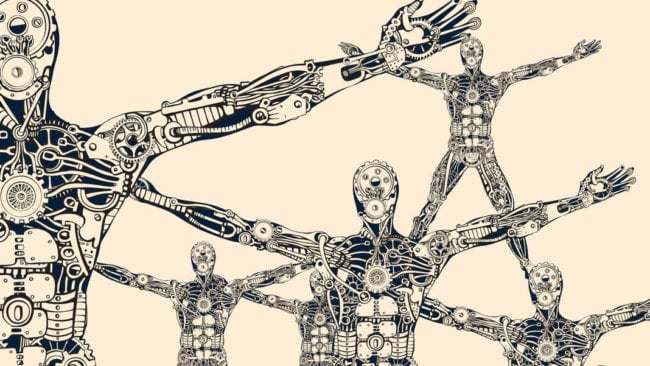- Get link
- X
- Other Apps

The cyborg era may be closer than we think. The rapid improvement in medical robots, wearable devices, and implants means that many people are already half machine, and this trend will only gain momentum. This is most noticeable in the field of medical prosthetics - extremely effective prostheses made of titanium and carbon fiber are gaining popularity. The use of "blades" by Paralympians even raised the question of whether they offer advantages over biological limbs.
For decades, myoelectric prosthetics — when artificial limbs read muscle signals, allowing a person to control the device — provided patients with a mechanical replacement for lost limbs.
Now progress in robotics leads to prosthetic hands that approach the original in terms of agility. The Michelangelo prosthetic arm is fully mobile and precise enough for tasks such as cooking and ironing.
Scientists have even demonstrated robotic arms that can be touched and controlled by the power of thought. And just last month, another group of scientists showed that installing a standard myoelectric prosthesis with a camera and a computer vision system allowed him to “see” and capture objects without having to move a muscle.
Medical exoskeletons are already commercially available — for example, ReWalk and Ekso Bionics devices, designed to help people with spinal cord injuries who cannot stand or walk. In addition, such technologies are used to rehabilitate people after strokes or other injuries, ensuring their movement.

Currently, these technologies are exclusively for those who have lost the ability to move partially or completely, but this will not always be the case. The pace of development of robotics and artificial intelligence is accelerating, and it is time to start a discussion about the direct application of such technologies in the near future.
Future assistive technologies will not only compensate for the disability of people, but also improve human potential, bring it beyond our natural level. The associated transformational impact will lead to broad social, political and economic issues.
All this can already be seen on the example of the development of military exoskeletons, designed to increase the endurance of soldiers. What is strange, Japanese scientists have recently put forward the idea of adding them to our limbs, and not replacing them. The MetaLimbs project provides people with two additional limbs that can be controlled using sensors on their legs.
Last week, a study appeared in Science Robotics demonstrating that a soft robotic exosuit more effectively lightened the load on a runner when it did not follow the natural pattern of human movement, but instead used computer modeling for force application decisions.
This suggests that the machines can not only significantly increase muscle strength, but also optimize the biomechanics of our movements. And, as the authors of the work note, biomechanics is only one area of research that is conducted for the sake of reproducing and, finally, improving our abilities.
Devices like cochlear implants have been used to restore hearing for many years, and there are a number of experimental attempts to create bionic eyes that will return sight to the blind. In recent months, initiatives to improve our intellectual abilities through neural implants have been actively discussed.

Obviously, it will be a long time before people start demanding the amputation of their hand in order to get a brand new, shiny and robotic one. And it is likely that companies that actively promote consumer-class neurocomputer interfaces overestimate the number of people who want to go through voluntary brain surgery.
However, we have already taken the first steps towards the integration of our biological "I" with machines.
It can be argued that smartphones have already become prostheses designed to enhance memory and communication. And other, even more frank cybernetic additions may appear in our lives.
What does this mean for humanity? Natural evolution has long relied on mutations that provide short-lived, but significant benefits to the population. If new prosthetic technologies begin to bring these benefits overnight, the effects can be quite heterogeneous.
The main concern is that the newest additions will be available only to a few who can afford them, and in just a few generations you can find yourself in an elite that not only surpasses the rest of humanity financially, but also physically and cognitively.
At the same time, these technologies aggressively promise to restore a decent standard of living for countless people affected by injury or illness. And if they are applied fairly, they will help us solve many of the problems facing society.
The important thing is that the conversation about how to lead us through this stage of our evolution must begin now. Since, until now, these devices were created mainly to restore lost functions, we miss the fact that they can not only restore them, but also create new ones.
The article is based on materials .
- Get link
- X
- Other Apps
Comments
Post a Comment